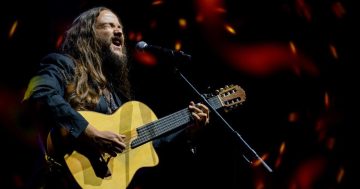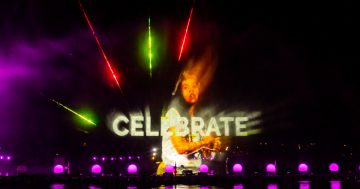By Rama Gaind.
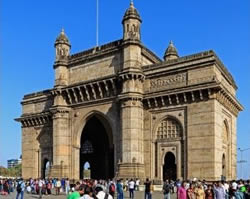
Gateway of India is in Mumbai.
It’s hard not to let our thoughts wander while restrictions are still in force on Australians travelling overseas. Hence, reminiscing is the next best thing … indulging in enjoyable recollections of past journeys.
One such travel experience was staying in India just over 12 months ago. It coincided with celebrating Diwali, the Indian Festival of Lights. A unique festival of its kind, Diwali or Deepawali, epitomises the Indian socio-cultural, nay, philosophical ethos: “Be not afraid, let not depression nail you down, and hope for the best, for this is not the end of the world”. It is one Indian festival where traditions highlight India’s diversity and culture.
Ways of celebrating are one of the most enchanting expressions of rejoicing to be found anywhere in the world. Families, friends and business associates exchange gifts and sweets, settle old business deals and are encouraged to rid themselves of hate, anger and jealousy. Gay abandon at parties and sparkling fireworks displays are the order of day and night. The festival is a time for rejoicing and renewal.
Regardless of the challenges faced during 2020, Saturday, 14 November this year was a time to wake up to a new luminosity of hope, aspirations for the day and the year ahead.
For those living in India, and expatriates overseas – even for all their global orientation – have clung to the trappings of “being Indian”. They make a conscious effort to bolster and transmit cultural facets to succeeding generation. This explains the rationale of the institutions of temples and cultural centres, where families get together as an extended family in an eternal cycle of belonging and sharing – eating together, celebrating together, praying together, wearing together the badge of Indianness.
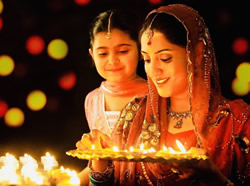
Diwali is observed throughout the length and breath of India and the Indian diaspora overseas.
Diwali is one of my favourite festivals. No matter where you are at this time, each year brings family and friends together as their homes are decorated with lights. Shopping and exchanging gifts are a big part of the celebration with new clothes, jewellery, sweets and diyas (traditional oil lamps) topping the list of souvenirs.
Historical sightseeing
It’s also a time to rejuvenate the joyous spirit, bring in good cheer and go sightseeing – which was what I also did – and it was a valuable lesson in history. In India’s capital, New Delhi, a visit to India Gate, is a must. It is a war memorial to 82,000 soldiers of the undivided British Indian Army who died in the period 1914–21 in the World War I, in France, Flanders, Mesopotamia, Persia, East Africa, Gallipoli and elsewhere in the near and the Far East, and the third Anglo-Afghan War.
Most tourists head straight for the more famous Red Fort, a historic fort in old Delhi that served as the main residence of the Mughal Emperors, but the Purana Kila (old fort) is often overlooked. Boasting a past that stretches back some 2,500 years, much of the current impressive edifice dates back to the 1500s, although evidence of earlier structures dating back to the 3rd century have been discovered.
Qutub Minar is India’s tallest minaret and now a UNESCO World Heritage-Listed site. The Jama Masjid is one of India’s largest mosques and was the final architectural feat of Mughal emperor Shah Jahan, who built the stunning 17th century white marble Taj Mahal in Agra as a mausoleum for his beloved wife Mumtaz Mahal.
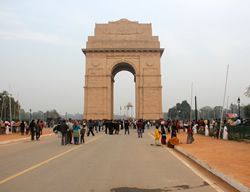
India Gate is in New Delhi.
Humayun’s Tomb is set in a lovely, large square garden, a lofty mausoleum constructed of white marble and red sandstone that was built in the mid-16th century by Haji Begum as a memorial to her husband.
Mohandas Karamchand Gandhi was the leader of India’s non-violent independence movement against British rule. Known as Mahatma Gandhi, the Gandhi Smriti and the Mahatma Gandhi Memorial are a testament to the man’s legacy.
Near Connaught Place, one of New Delhi’s largest and best-known business districts, Jantar Mantar is one of five astronomical observatories constructed by Maharajah Jai Singh I in 1725.
Rajpath, also known as the King’s Way, is New Delhi’s traditional ceremonial boulevard, that goes from Rashtrapati Bhavan, the official presidential residence, passing some important city landmarks.
Check out the colorful markets in Chandni Chowk, Janpath Market, Karol Bagh and classic food stalls in Connaught Place and Mughlai cuisine in old Delhi.
While in the Republic’s financial capital Mumbai, one can’t go past the waterfront in Colaba, south Mumbai, where the Gateway of India, was constructed to commemorate the visit of King George V and Queen Mary to the city. It remains as a striking symbol of the British Raj era.
In the middle of Mumbai Harbour, nine kilometres northeast of the Gateway, are the rock-cut temples on Elephanta Island – a UNESCO World Heritage site – and worth crossing the waters.
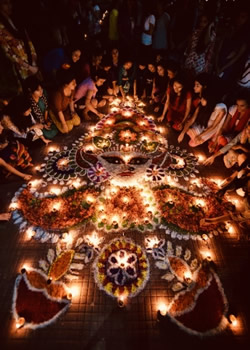
The gay abandon forms part of Diwali celebrations all over the world.
Chhatrapati Shivaji Terminus (Victoria Terminus) is imposing, exuberant and overflowing with people. It is the city’s most extravagant Gothic building, the beating heart of its railway network and an aphorism for colonial India.
Linking Road (Vithalbhai Patel Marg), in Mumbai’s Bandra locality, is a shopper’s paradise.
Origin in legend
The origin of Diwali, like other Indian festivals, is lost in mythology. It is interesting to note that with these legends have flourished a rich variety of customs and traditions. However, all these legends record the triumph of good over evil and light over darkness.
Diwali comes from the word Dipavali where — Dipa meaning light and Avali means rows of light/carrier of light. It is particularly associated with Lakshmi, the goddess of prosperity, and marks the beginning of the financial year in India.
Another legend connects Diwali with the return of Lord Rama of the Ramayana epic to his capital Ayodhya after 14 years in exile. As the legend goes, the whole city was gaily illuminated in commemoration of the event.
Diwali is by far the most picturesque and universal festival in India, celebrated with great zeal, eclat and devotion. Ruminating over nostalgic memories proves what Hilaire Bellocs said was so true: “We wander for distraction, but we travel for fulfilment.”




